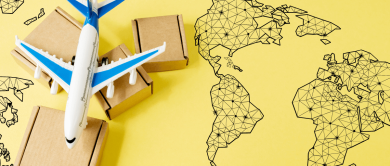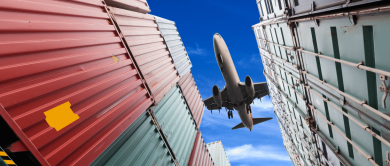The arrival of e-commerce changed the way of buying as we knew it, the adaptation to this new method of consumption has been so fast on the part of society that the efforts of companies to satisfy their needs are not always enough.
But not everything was so well accepted, that e-commerce businesses ran into barriers that kept customers from buying. Accustomed to buying physically, customers were reluctant to pay online for fear of giving their data to the wrong place or being scammed.
The effort of e-commerce managed to overcome this barrier and today, paying digitally is not a problem for consumers, but they will take into account the different delivery options that the seller offers.
For this reason, it is important to focus efforts on logistics and the development of last-mile strategies.
The Last-Mile Delivery and its Problems
As we have mentioned before, logistics is one of the parts of the sales process most valued by customers, which makes companies investigate and innovate to improve in this area.
Logistics operations have advanced a lot through the application of technological means, from large e-commerce to small digital stores, all businesses have progressed in this area in search of offering the best experience to end-users.
Within the logistics process through which packages pass, the last mile refers to the final step experienced by the shipment that reaches the hands of the customer and is the most expensive and slowest part of the entire process. In addition, the large number of e-commerce businesses that use logistics and transportation has exacerbated this problem.
Keys to Improving Last-Mile Delivery
Diversity of Delivery or Collection Methods
In the last mile, delivery people deal with the uncertainty of whether the buyer of the package will be at the address just when they ring the bell or not. Getting to return the package to the warehouse involves time and adds up to the extra costs, which must be avoided.
By AGOL worldwide couriers, there are alternative means to prevent this from happening, one of them is the communication between the delivery person – the client. Applying this technique, the customer will be able to choose the place of delivery where they want to receive the order or even stay in contact with the delivery person and agree on a place of reception in real-time.
On the other hand, more and more delivery companies are establishing convenience zones for last-mile distribution, places close to the consumer where the delivery person can deposit the order with the certainty that it will be kept until the person picks it up. These places are usually posted offices, train stations, or local POS.
Improved Distribution Process
Distribution models have undergone development in recent years, not only in the delivery vehicles but a significant improvement has been made in customer assistance regarding the last mile delivery.
The use of more agile and versatile vehicles such as motorcycles or bicycles are smart bets so that companies can move more effectively around cities.
One of the latest innovations in city travel is electric scooters, an ecological vehicles specifically designed to carry out city deliveries with 0% emissions. An intelligent bet on last-mile logistics that we will soon see on the streets, as it has already been announced that many countries and some major corporations have committed to using this method.
Regarding user assistance, offering your customers the opportunity to check the status of their order, including being able to follow it with the map and maintain contact with the delivery person, are added values that improve the user experience.
Delivery Route Planning
Planning the shortest routes, with less traffic and matching several deliveries in the same area, makes last-mile logistics profitable, reduces fuel consumption, and improves service quality.
In addition, the software developed for the logistics sector facilitates the work. Designed to provide the best shopping experience, these systems offer a real-time response, promote active communication between employees, improve delivery coordination between carriers, reduce costs and allow all the organization’s demands to be supported.
Communication Between the Areas Involved
The single-channel system was the most used in previous years, today the communication systems have improved and thanks to the omnichannel environment, managing and carrying out distribution actions in the last mile is more proactive than ever.
Omnichannel logistics makes it possible to access inventories remotely, have customer reports, notify updates and incidents, proactively solve unforeseen events, and endless advantages for the field of last-mile logistics and distribution
















